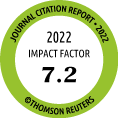|
Background:
Cysteinyl
leukotriene
production seems to
be dysregulated in
patients with
hypersensitivity to
aspirin and other
nonsteroidal
anti-inflammatory
drugs (NSAIDs).
However, the
underlying
pathogenic
mechanisms of these
reactions are poorly
understood. Previous
studies have
suggested a role for
the A444C
polymorphism on the
leukotriene C4
synthase gene
(LTC4S) in
aspirin-induced
urticaria (AIU), but
the results are
controversial.
Objective: To
evaluate in a
case-control study
whether the A444C
polymorphism in the
promoter region of
LTC4S is associated
with AIU and atopic
phenotypes in a
Venezuelan
population.
Methods: One
hundred ten patients
with AIU and 165
nonallergic controls
were included. AIU
was diagnosed by
clinical history and
confirmed by
double-blind
placebo-controlled
oral provocation
tests with NSAIDs.
Genotyping of A444C
was performed by
real-time
polymerase chain
reaction using
Taqman probes. Atopy
was defined as a
positive skin test
result to any of the
25 aeroallergens
tested.
Total and
mite-specific
immunoglobulin (Ig)
E levels in serum
were quantified
using an
enzyme-linked
immunosorbent assay.
Results:
A444C was
associated with AIU.
The C allele was
more frequent in
patients with the
cutaneous pattern of
AIU and in patients
with low skin
reactivity to
histamine. There was
no association
between A444C and
asthma, atopy, or
total IgE levels.
Conclusion:
The C allele of the
A444C polymorphism
is a risk factor for
AIU in our
population and could
be a genetic marker
for this phenotype.
Furthermore,
this
single-nucleotide
polymorphism is
mainly associated
with the cutaneous
clinical pattern and
with low skin
response to
histamine.
Key words:
LTC4S. Histamine.
Aspirin-induced
urticaria.
Leukotrienes. NSAIDs.
|



